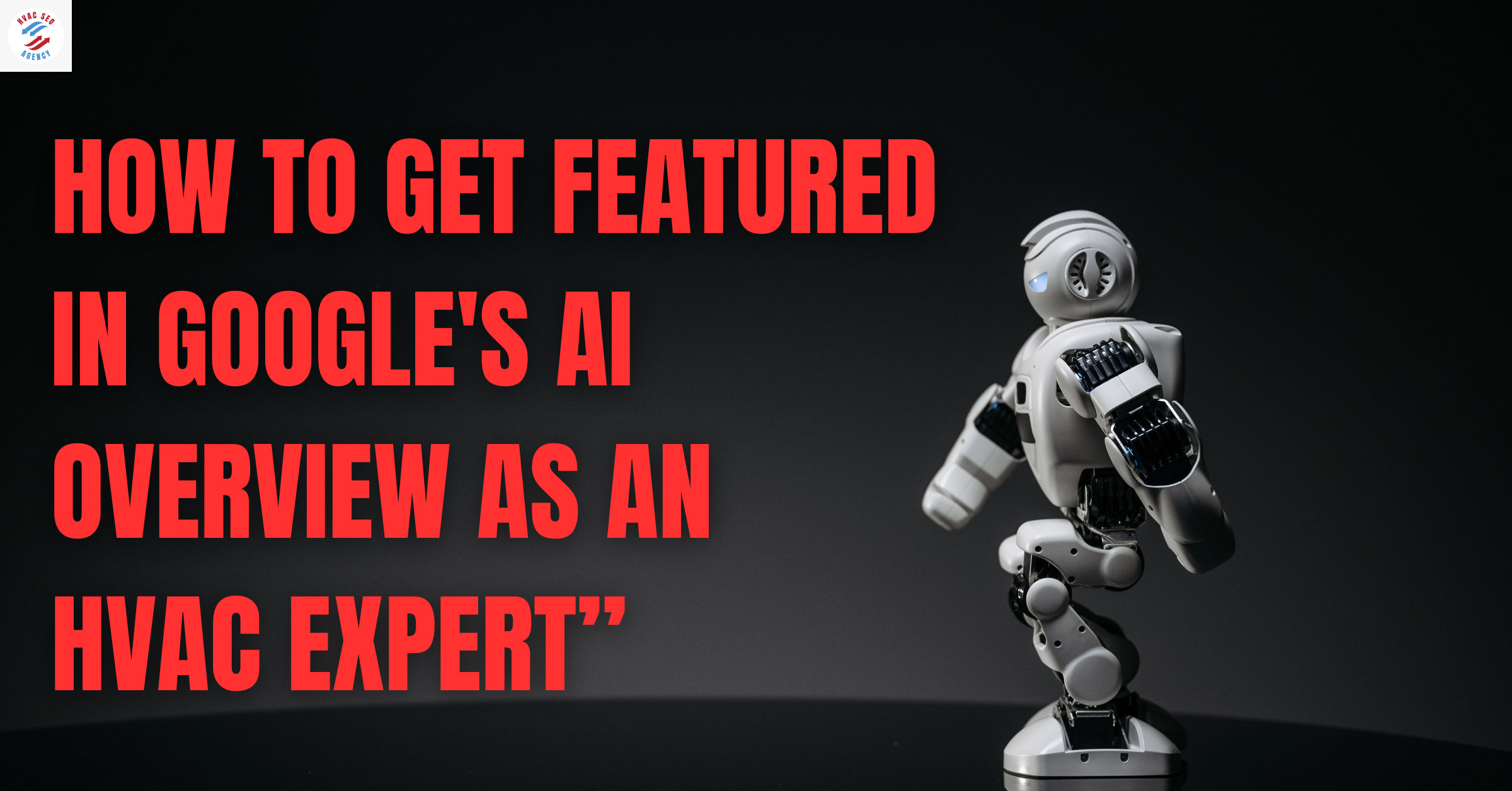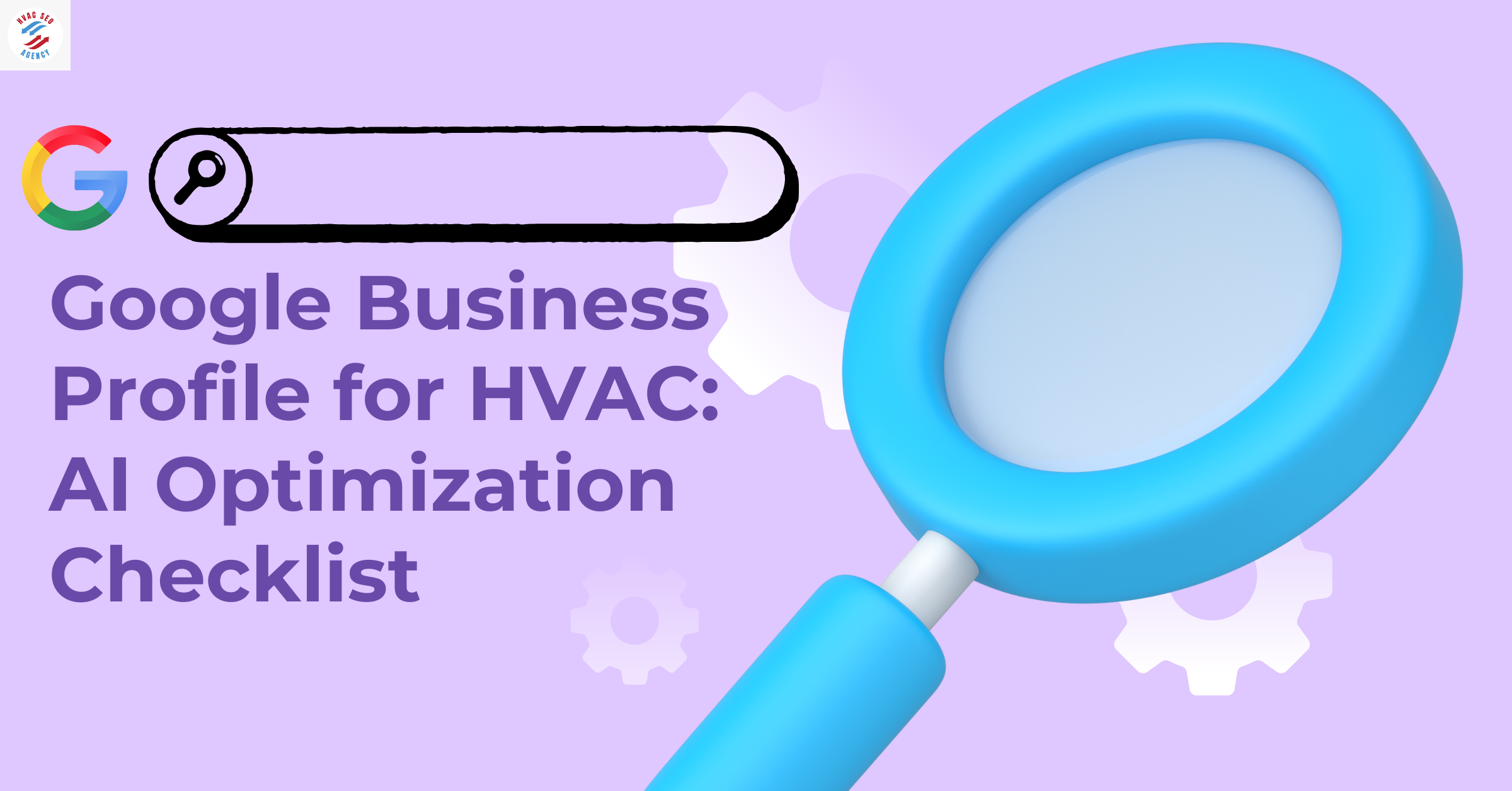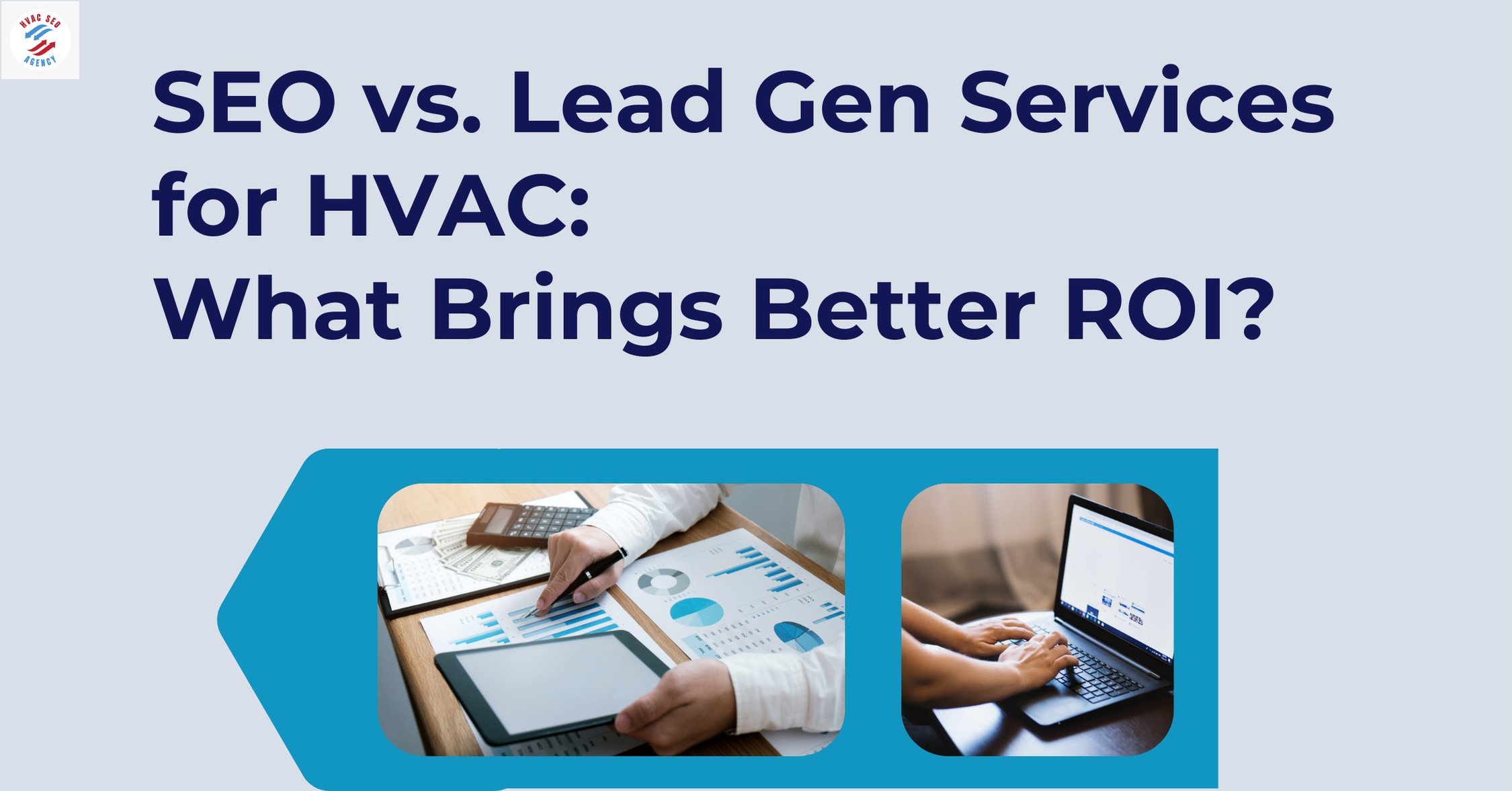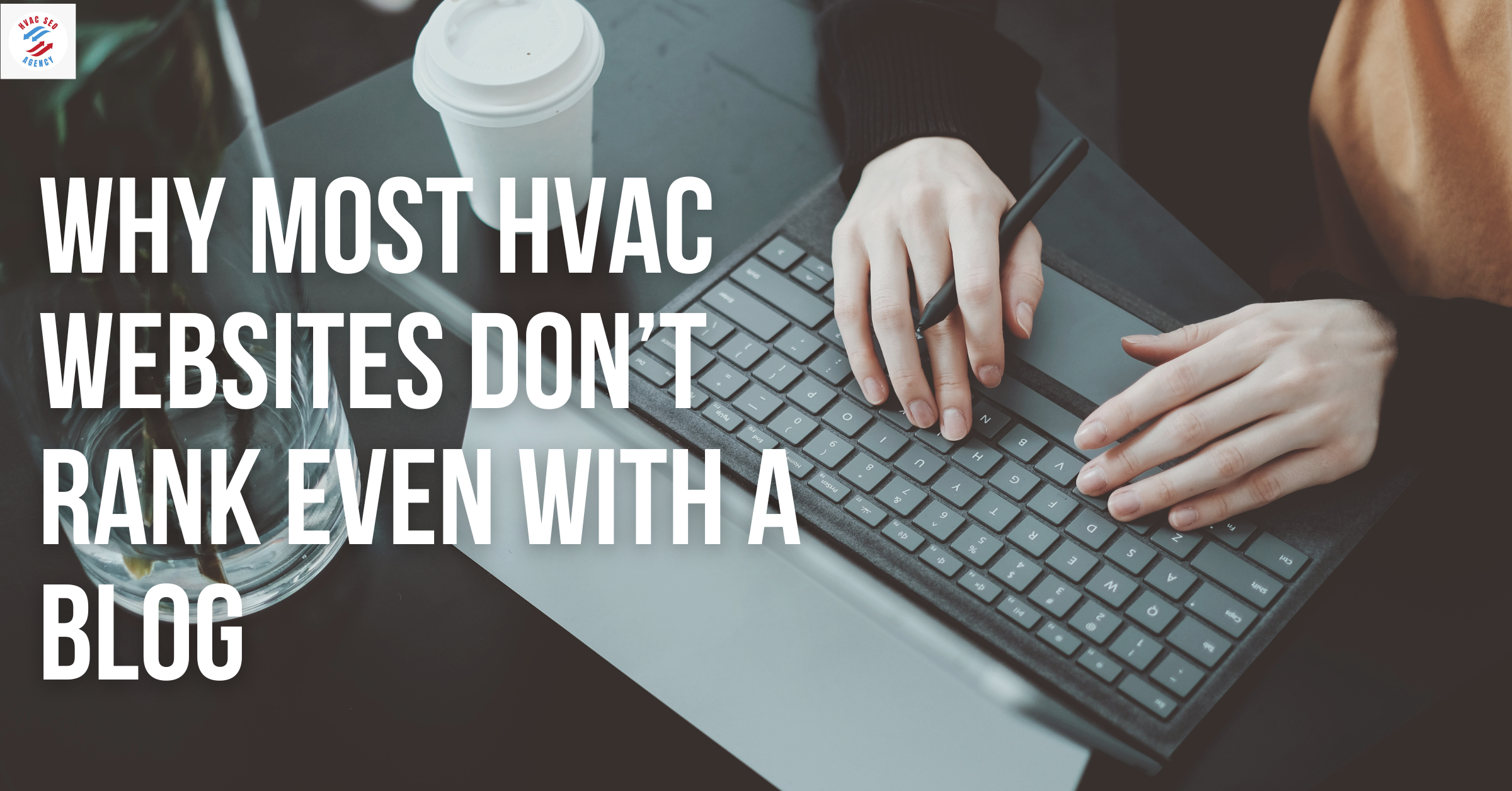How to Price Your HVAC Services for Maximum Profit

Section 1: Why Strategic Pricing Is the Backbone of HVAC Profitability
Pricing your HVAC services isn’t just about matching your competitors—it’s about understanding your true value, your market positioning, and your long-term business goals. Whether you're a startup HVAC company or an established provider, pricing can either accelerate your growth or quietly bleed your margins.
Many HVAC businesses in the U.S. lose profitability not because they lack customers, but because they miscalculate the actual cost of service delivery, overheads, and market psychology. That’s where strategic HVAC pricing strategies come into play.
Why Pricing Matters in the HVAC Industry
The HVAC market in the U.S. is worth over $130 billion as of 2024 (Statista), and yet more than 60% of small HVAC businesses operate on tight margins or break even. This disconnect often stems from either underpricing to win bids or failing to adapt to fluctuating operating costs like labor, fuel, and parts.
Stat Box:
U.S. HVAC Market Size (2024): $130+ Billion
Average Net Profit Margin for HVAC Contractors: 6–8% (IBISWorld)
Failure Rate for HVAC Startups in 3 Years: Nearly 40% (SBA, 2023)
Table: Hidden Costs That HVAC Businesses Often Ignore
Source: HVAC Business Owner Reports (U.S., 2024), SCORE, IRS Data
How Local SEO Impacts Pricing Power
Many HVAC companies don’t realize that their pricing flexibility is directly tied to their local visibility online. If your business appears on the first page of Google for relevant local searches, you're not just attracting more leads, you're attracting high-intent customers willing to pay a premium for trust and convenience.
Using Local SEO for HVAC Contractors, especially in competitive cities, helps HVAC businesses escape the “race to the bottom” on pricing. Instead of competing on cost alone, they start competing on value, reliability, and brand credibility.
Example: HVAC companies with strong Google Business Profile optimization and consistent 5-star reviews in cities like Columbus saw conversion rates improve by over 40% (BrightLocal, 2024).
Why You Need an Affordable HVAC SEO Agency in Columbus
If you're operating in Columbus, Ohio, a city with a growing demand for both residential and commercial HVAC services then partnering with an Affordable HVAC SEO Agency in Columbus can help you build pricing power through local online dominance.
Agencies that specialize in Local SEO for HVAC Contractors understand how to:
Optimize your Google Business Profile
Get your HVAC services featured in local “map packs”
Improve your HVAC site speed and mobile usability
Increase trust through schema markup and local backlinks
This strategy doesn’t just bring more traffic, it helps you justify higher prices by building brand authority and trust.
Graph Suggestion: Relationship Between HVAC Pricing & Local SEO Ranking
The graph should show that HVAC businesses ranking in the top 3 can charge 20-35% higher prices than those ranking below position 7.
Section 2: How to Price HVAC Services Without Losing Profit
To sustainably grow your HVAC business, it’s not enough to attract clients, you must learn how to price HVAC services without losing profit. Undercharging might win you jobs, but it quietly drains your revenue. Overcharging might push customers away unless you're offering unmatched value. Striking the right balance is both a science and an art.
Understanding Break-Even and Profit Margins
Before setting any prices, you must first calculate your break-even point. This is the minimum amount you must charge per job just to cover all costs of materials, labor, travel, administration, insurance, and marketing. Once this is clear, only then can you set a markup that yields true profit.
According to the U.S. Small Business Administration, HVAC contractors who don’t factor in indirect expenses like travel time, after-service support, or seasonal slowdowns often miscalculate their profit margins by 15–20%.
Table: HVAC Cost Structure Breakdown (Per Standard Residential Job)
Source: HomeAdvisor, HVAC Biz Reports 2024
This model shows that to price HVAC services without losing profit, you must account for every overhead. Skipping just one element like travel or insurance can shrink your expected margin drastically.
Smart Pricing Tactics for Maximizing Margins
Use Tiered Pricing Packages
Offer three service levels: basic, standard, and premium. This strategy helps anchor your highest-priced service as the most valuable, subtly nudging customers toward the middle option.Charge Flat Fees for Predictable Services
Jobs like A/C inspections or duct cleaning benefit from flat-rate pricing. It ensures clarity for customers while protecting you from underbilling due to underestimated hours.Use Seasonal Pricing Adjustments
In peak seasons (summer for cooling, winter for heating), demand rises. This is the best time to implement a modest markup without pushback. During off-peak months, offer service bundles or preventive maintenance deals.Include Diagnostic Fees in Final Bills
HVAC businesses that waive their initial inspection fee if the customer proceeds with service recover more operational costs without resistance.
Graph Suggestion: Effect of Flat-Rate vs Hourly Pricing on Revenue Consistency
Psychological Pricing Consideration
Pricing is not just math, it's psychology. Ending your service prices in “9” or “95” ($299 instead of $300) can subconsciously position your services as more cost-effective. Similarly, emphasizing value-added services like faster response times, priority scheduling, or follow-ups can justify a higher base price.
Section 3: The Psychology of Pricing in the HVAC Market
Beyond numbers and margins, how you present your pricing can significantly impact whether a customer says “yes” or walks away. Homeowners and facility managers don’t always choose the cheapest option; they choose the option they perceive as offering the best value.
Why Perception Beats Price
Research by Harvard Business School shows that customers are more likely to purchase when pricing is transparent and emotionally reassuring, even if it's slightly higher. In HVAC services, this means bundling, guarantees, and visual clarity can help convert more leads into paying clients.
Example: Two HVAC companies offer the same A/C maintenance plan. One charges $199 with a “90-day service guarantee,” while another charges $179 with no added value. Most customers will still choose the $199 option.
Price Anchoring in HVAC Sales
Price anchoring is a powerful tool. By presenting a high-value premium option first, you make your standard offering look more affordable even if it’s above the market average. For example:
Premium Plan: $499 – Includes seasonal tune-ups, 24/7 support, and duct cleaning
Standard Plan: $349 – Includes bi-annual maintenance + emergency support
Basic Plan: $249 – Inspection only
This strategy increases average order value and helps price-conscious clients avoid choosing the cheapest tier out of fear.
Table: Customer Psychology Triggers and Pricing Techniques
Source: HVAC Consumer Insights, Harvard Business Review, 2024
Graph Suggestion: Customer Conversion Rate vs Pricing Presentation Style
Packaging Builds Trust
Many HVAC contractors are hesitant to offer fixed bundles or clear price lists online. But today’s customers research before they call and when they do call, they expect price clarity. Transparent, bundled pricing increases trust, which increases sales conversion.
BrightLocal’s 2024 survey found that 73% of HVAC customers prefer businesses that list clear service packages on their website over those that don’t provide upfront estimates.
Section 4: Why Your HVAC Business Needs a Strong Google My Business Profile to Justify Your Pricing
If you're trying to charge premium prices for your HVAC services, credibility is non-negotiable. In today’s digital-first landscape, one of the fastest ways to earn that credibility especially at the local level is through a fully optimized Google My Business (GMB) profile. Quite simply, your HVAC business needs a strong Google My Business profile if you want to maximize profits through value-based pricing.
How GMB Impacts HVAC Pricing Strategy
Customers researching HVAC services often start with a Google search like “AC repair near me” or “furnace maintenance in [city].” The top results are usually the Local Map Pack, driven by GMB profiles. These businesses get the first look, first clicks, and most importantly the most trust.
According to a 2024 BrightLocal study:
HVAC businesses with 30+ reviews and a 4.5+ star rating see 42% more quote conversions.
86% of customers said they’re willing to pay more for a company with verified reviews and a local presence on Google.
Table: Google My Business Metrics and Their Pricing Influence
Source: BrightLocal, 2024 Local Services Ranking Factors
GMB Helps You Break Out of the “Lowest Bid” Trap
HVAC contractors without a visible GMB profile are forced to compete in low-bid marketplaces like HomeAdvisor, where the cheapest price often wins. But those with strong GMB visibility appear as reputable local businesses not commodity contractors.
A well-optimized GMB profile:
Shows up in voice searches and mobile maps
Encourages high-intent calls
Justifies higher estimates with trust-building visuals and testimonials
Graph Suggestion: HVAC Job Win Rate by GMB Profile Strength
.
GMB Profile Optimization Checklist
To ensure your HVAC business needs a strong Google My Business profile that converts and commands higher pricing, follow this:
Claim and verify your listing
Upload high-quality before/after job photos
Add all HVAC services with seasonal relevance
Set accurate hours (include emergency availability)
Use HVAC-specific keywords in your service descriptions
Respond to every review positive or negative
Section 5: Benchmarking Against Competitors – Why Market Research Matters
Even the most detailed internal pricing formula can fall flat if it ignores external market trends. To price your HVAC services competitively and profitably, you must understand what other contractors in your area are charging and why.
Many HVAC businesses make the mistake of either copying competitor prices blindly or ignoring them altogether. Both approaches are flawed. Strategic benchmarking allows you to stay market-relevant without compromising profitability.
What You Should Benchmark
When reviewing competitors, don't just look at their hourly rate or flat-fee price. Focus on the value stack: what is bundled into that price?
Here’s what to compare:
Service offerings (e.g., repair vs. full system install)
Guarantees & warranties
Speed of delivery or response time
Customer reviews and local reputation
Digital presence (GMB, website, online scheduling, etc.)
Table: Example HVAC Competitor Price Audit (Columbus, Ohio, 2024)
Source: Columbus-based HVAC pricing audit, May 2024 (Google Business, Yelp, Direct)
How to Use This Benchmarking
Once you gather data, map where your prices sit in relation to competitors:
If you’re more expensive, justify it with superior service, speed, or warranties.
If you’re cheaper, make sure it’s a deliberate positioning move, not a blind undercut.
Then adjust your pricing matrix accordingly but always protect your margins.
Section 6: How Energy-Efficient HVAC Systems Can Cut Costs and Boost Profits
In today’s HVAC market, profitability isn’t just about charging more, it's also about reducing operational waste and delivering long-term value to your clients. That’s why energy-efficient HVAC systems can cut costs and boost profits for both contractors and customers.
These systems are no longer niche offerings; they're rapidly becoming the industry standard due to rising energy costs, tighter environmental regulations, and shifting homeowner expectations.
Why Efficiency = Pricing Power
Modern homeowners and commercial property managers are increasingly looking beyond the initial installation cost. They’re evaluating total cost of ownership, which includes:
Energy consumption
Maintenance frequency
Expected lifespan
Environmental impact
If you specialize in high-efficiency systems (like ENERGY STAR-certified heat pumps or variable-speed compressors), you can:
Charge a higher upfront fee
Justify it with lifetime savings data
Offer value-based pricing tiers
This strategy allows you to retain healthy margins while serving price-conscious and eco-conscious customers alike.
Table: Comparison – Traditional vs Energy-Efficient HVAC Systems (Per Unit)
Source: U.S. Department of Energy, ENERGY STAR HVAC Efficiency Report 2024
The Contractor’s Advantage
From the contractor's perspective, offering energy-efficient systems benefits your pricing strategy by:
Opening upsell opportunities
Building trust through long-term savings promises
Attracting environmentally conscious customers
Increasing the average ticket size per installation
You’re not just selling an HVAC system, you're selling reduced energy bills, better comfort, and sustainability. This positions your brand as modern, consultative, and worth the premium.
Graph Suggestion: Profit Margin Comparison – Standard vs High-Efficiency Installations
Bonus Tip: Bundle Efficiency with Maintenance Plans
If you want to truly maximize your earnings, offer bundled maintenance plans with every energy-efficient system installation. This:
Reduces customer churn
Extends equipment life
Builds long-term recurring revenue
Section 7: Why You Need the Top HVAC Marketing Experts in Cleveland to Maximize Pricing Impact
You could have the best pricing model in your city but if no one sees your offers, it won’t matter. Visibility is everything. That’s why working with the top HVAC marketing experts in Cleveland isn’t just a smart move, it's a profit strategy.
Pricing and marketing go hand-in-hand. You can’t command premium pricing without brand authority, trust, and a consistent stream of high-quality leads. The right marketing agency ensures that your pricing is supported by visibility, positioning, and reputation.
What the Top HVAC Marketing Experts in Cleveland Actually Do
A generic digital agency won’t cut it. You need specialists who understand the unique psychology of HVAC buyers and how to present your services as high-value, not just low-cost. Here's what expert HVAC marketers bring to the table:
Localized SEO Strategies: Ranking your service pages for “furnace repair Cleveland” or “AC installation near me”
Conversion-Optimized Landing Pages: Designed to showcase value-based pricing and premium service tiers
PPC Campaigns for High-Ticket Jobs: Like full system installations, ductless mini splits, or energy-efficient upgrades
Review Management: Building trust on Google to support higher pricing
Remarketing & Email Nurturing: So leads that don’t convert immediately stay in your pipeline
According to a 2024 survey by Contractor Commerce, HVAC businesses that invested in HVAC-specific marketing agencies saw average ticket sizes increase by 28% within 6 months.
Table: Value Impact of Working with HVAC-Specific Marketing Experts
Source: Contractor Commerce HVAC Agency Performance Study, 2024
Premium Pricing Requires Premium Perception
If your brand doesn’t look and feel like a premium HVAC provider, your pricing won’t be taken seriously. The top HVAC marketing experts in Cleveland know how to build this perception:
Custom branding and color psychology
Service bundling visuals with embedded value
Testimonials placed strategically near pricing
Fast-loading mobile-first websites
GMB integration that supports your Google map visibility
Graph Suggestion: Revenue Growth With vs Without HVAC-Focused Marketing
Section 8: Dynamic Pricing Strategies for HVAC Services Adapt and Win
In an industry as seasonal and service-sensitive as HVAC, one of the most underutilized tools for maximizing profit is dynamic pricing. This approach involves adjusting your pricing based on factors like demand, availability, season, and even weather patterns.
Think of airlines or ride-share apps: prices fluctuate based on real-time supply and demand. HVAC businesses can apply the same logic without compromising customer trust when structured properly.
When to Use Dynamic Pricing in HVAC
Peak Seasons: During extreme heat waves or cold snaps, your service demand spikes. You can apply a surge factor or add a “priority response fee.”
Emergency Services: For same-day or after-hours jobs, include a premium price that reflects staffing and logistics overhead.
Slow Periods: Offer seasonal discounts, tune-up packages, or bundling options to drive volume when demand dips.
High Demand Zip Codes: Use heat maps or CRM data to identify profitable neighborhoods where urgent services justify higher rates.
Table: Dynamic HVAC Pricing Triggers and Suggested Adjustments
Source: HVAC Service Data, National Contractor Pricing Index 2024
Dynamic Doesn’t Mean Dishonest
To protect your brand, transparency is key. Always present dynamic pricing as value-based:
Use terms like "priority access," "seasonal rate," or "flex-scheduling fee"
Let customers know they’re getting faster service, extended warranties, or added perks
Consumers are more likely to accept flexible pricing if it’s tied to real value and positioned professionally.
Graph Suggestion: Revenue Gains From Dynamic vs Fixed Pricing in Peak Season
Dynamic Pricing Tools You Can Use
CRM-Integrated Dispatch Software: Adjust prices based on current technician availability
Weather-Triggered Campaigns: Use email/SMS blasts to offer limited-time services during heat waves or cold snaps
Local SEO Content Updates: Show time-sensitive offers on your website and GMB profile
Section 9: Educate Your Customers – The Hidden Key to Premium HVAC Pricing
Most HVAC contractors focus heavily on pricing internally costs, margins, markups but forget the most critical element: the customer's understanding of that price. A well-informed customer is not only more likely to buy but is also more likely to accept your price, even if it’s higher than a competitor’s.
Why Education = Justification
Customers often don’t know what goes into an HVAC job. They see the final quote—but not:
The licensing, insurance, and certifications you maintain
The overhead from vehicles, tools, software, and warranties
The diagnostic process that prevents long-term damage
The energy efficiency and lifetime savings built into your recommended system
When you take time to explain these factors clearly, customers no longer see you as expensive, they see you as professional and fair.
Table: Customer Perception Shift Based on Explanation
Source: ServiceTitan Customer Insights Report, 2024
Where to Educate Customers
On Your Website:
Add a "Why Our Pricing Makes Sense" or “What Goes Into Our Quotes” pageDuring Quotes:
Use visual estimate breakdowns to show labor, parts, diagnostics, and value-addsIn Post-Service Follow-ups:
Explain how your work has improved system efficiency or avoided future costs
Graph Suggestion: Conversion Rate with vs Without Educational Pricing Breakdown
Bonus: Use Visual Aids in Proposals
Simple visuals like pie charts or diagrams can turn a $5,000 system install quote into something understandable and justifiable. You’re not hiding the cost, you're making the cost feel reasonable.
Section 10: Focus on Lifetime Value – Not Just One-Time Profits
Many HVAC contractors make the mistake of evaluating success based on individual job profit. While this works in the short term, real profitability comes from maximizing the lifetime value of every customer and pricing plays a huge role in that.
It’s not just what you charge, it's how you price to retain, re-engage, and upsell over the long term.
Why Lifetime Value Is Your True Profit Engine
The average HVAC customer will need:
Seasonal tune-ups (twice a year)
Emergency repairs (every 1–2 years)
Full system replacement (every 10–15 years)
Indoor air quality upgrades (filters, UV, duct cleaning)
If your pricing encourages customer retention through service plans, bundles, and trust your business grows without constantly chasing new leads.
Table: Revenue from a Single HVAC Customer Over 10 Years
Source: HVAC Lifetime Value Benchmark Report, 2024
Retention Pricing Strategies to Boost CLTV
Membership Maintenance Plans
Offer annual packages with perks like priority scheduling and repair discounts.Loyalty-Driven Discounts
Provide 5–10% off new installs for returning customers who've maintained service plans for multiple years.Seasonal Reminders + Upsells
Use CRM tools to automate reminders and suggest filter replacements, duct cleaning, or energy-efficient upgrades.Long-Term Financing
Make premium installs more affordable with monthly payment plans, increasing accessibility and upfront revenue.
Graph Suggestion: Customer Lifetime Value – One-Time vs Repeat Engagement Pricing Models
1. How do I set the right price for HVAC services without undercharging?
Start by calculating your total overhead (labor, parts, insurance, fuel, marketing) and add a realistic profit margin. Use benchmarking and customer value perception to avoid undercharging. Your goal isn’t to be the cheapest, it's to be the most trusted.
2. Can I raise my HVAC service prices without losing customers?
Yes, if you communicate the added value. Explain what’s included, provide guarantees, and build trust through your Google My Business profile and reviews. When done right, customers will pay more for quality, reliability, and transparency.
3. Why should HVAC businesses invest in Local SEO or GMB optimization?
Because visibility equals pricing power. Ranking on Google Maps through Local SEO increases credibility, allowing you to charge more confidently. A strong GMB profile also reduces price objections and increases conversions.
4. What’s the best way to price emergency or seasonal HVAC services?
Use dynamic pricing. Charge premium fees during high-demand periods (heatwaves, cold snaps) or after-hours calls. Just ensure the value is clearly explained like faster service, guaranteed response, or priority access.
5. How can I increase customer lifetime value (CLTV) through pricing?
Offer recurring maintenance plans, loyalty discounts, bundled service packages, and flexible financing. CLTV-focused pricing helps you build long-term revenue streams instead of relying solely on new customer acquisition.
Conclusion
Pricing your HVAC services for maximum profit isn’t just about numbers, it's about strategy, psychology, visibility, and value delivery. From understanding cost structures and customer behavior to leveraging tools like Local SEO, GMB, and energy-efficient systems, your pricing model should be a reflection of both your brand promise and business intelligence.
In today’s market, customers are not always looking for the cheapest, they're looking for the most trustworthy. That’s where your pricing meets your reputation. By applying these proven HVAC pricing strategies, you won’t just stay competitive, you'll dominate your market with long-term profitability and sustainable growth.






